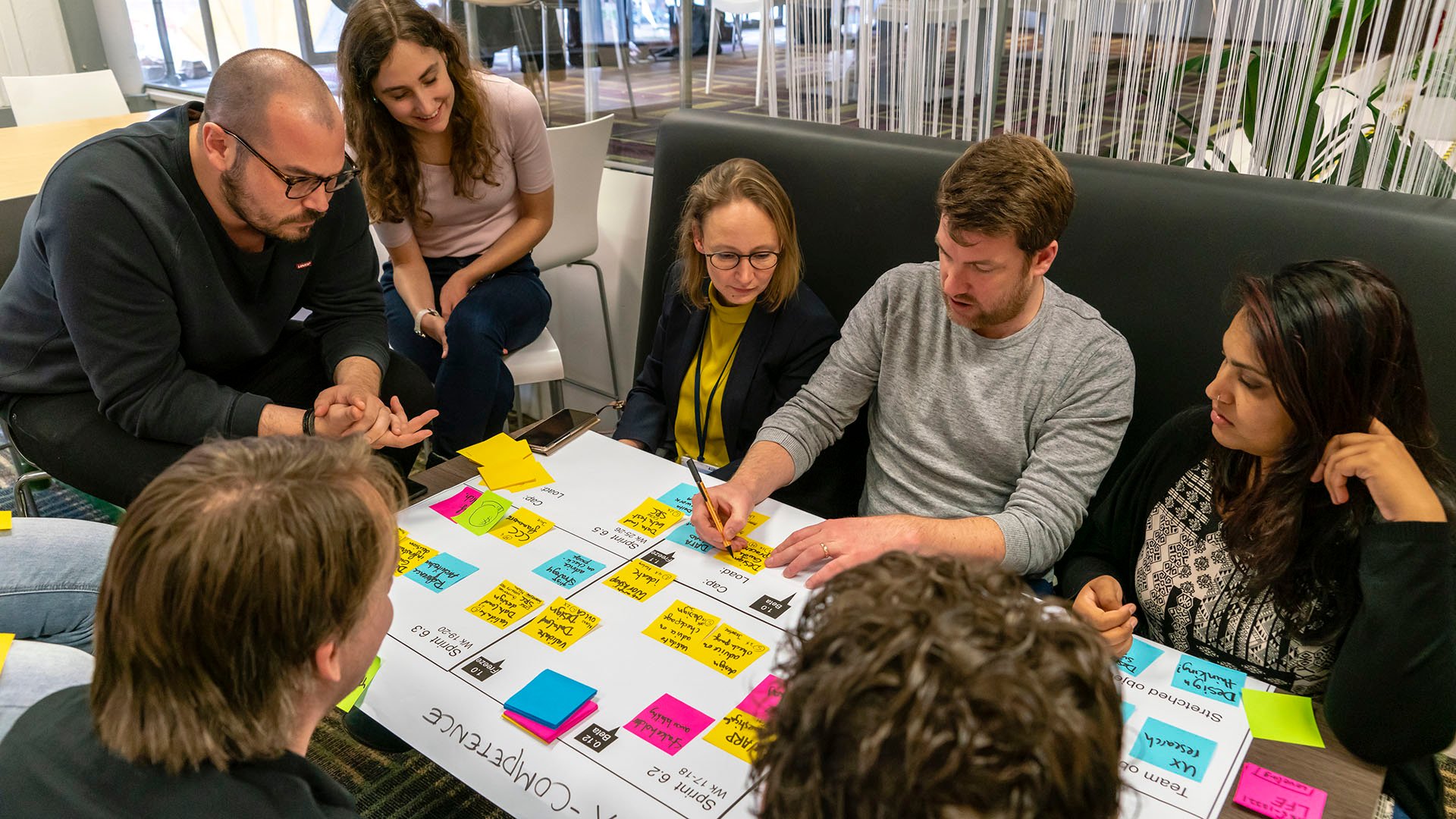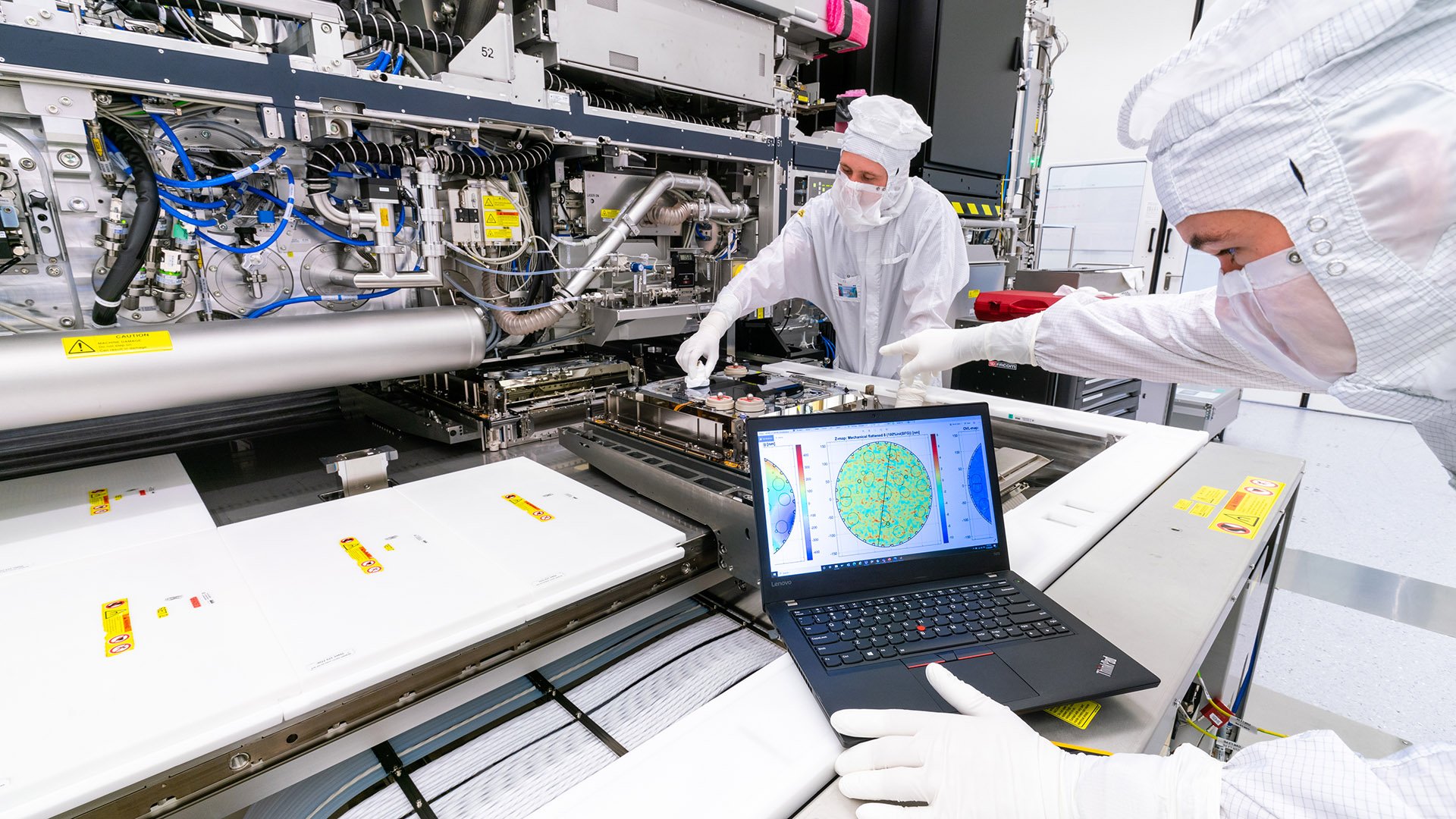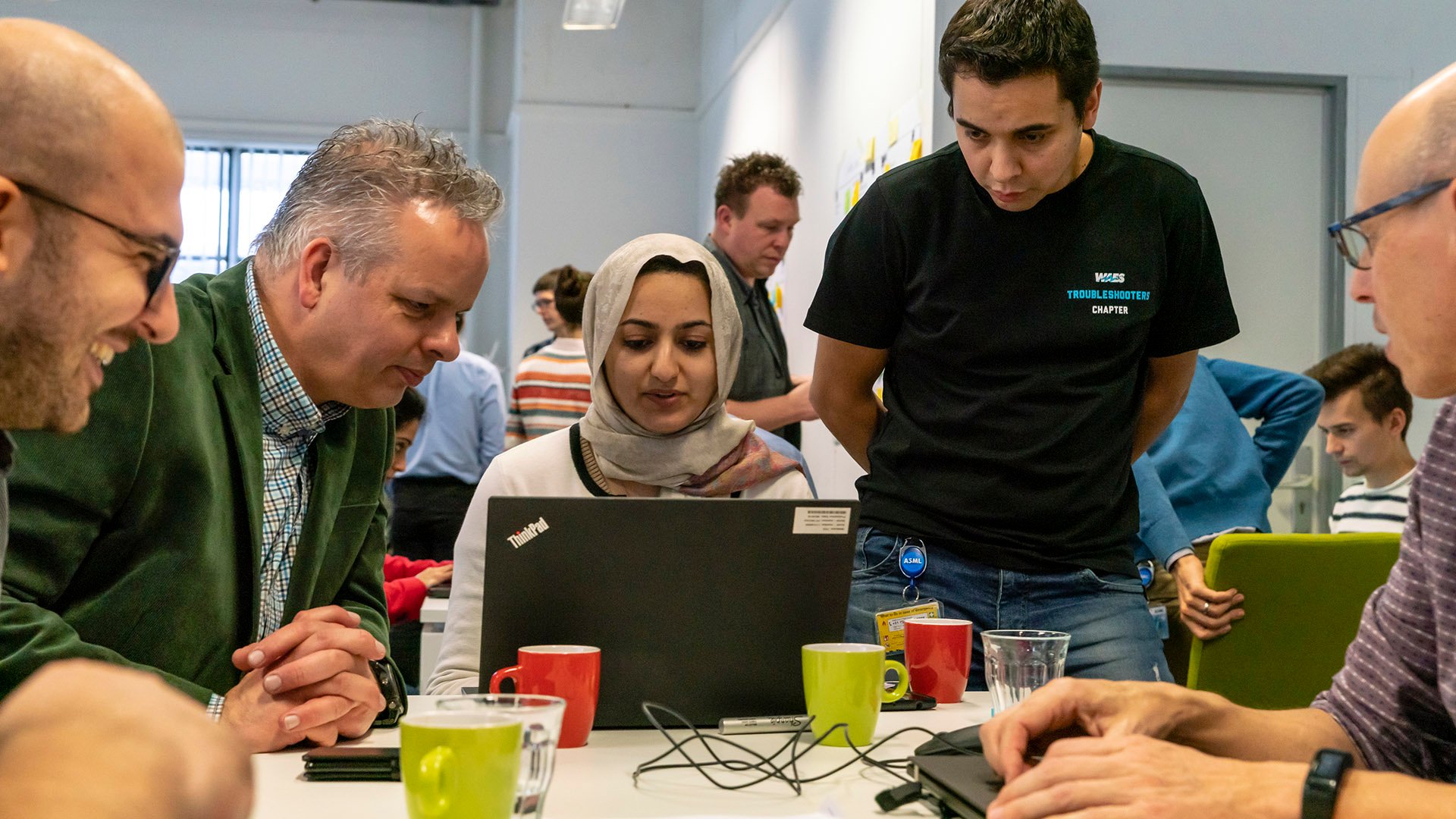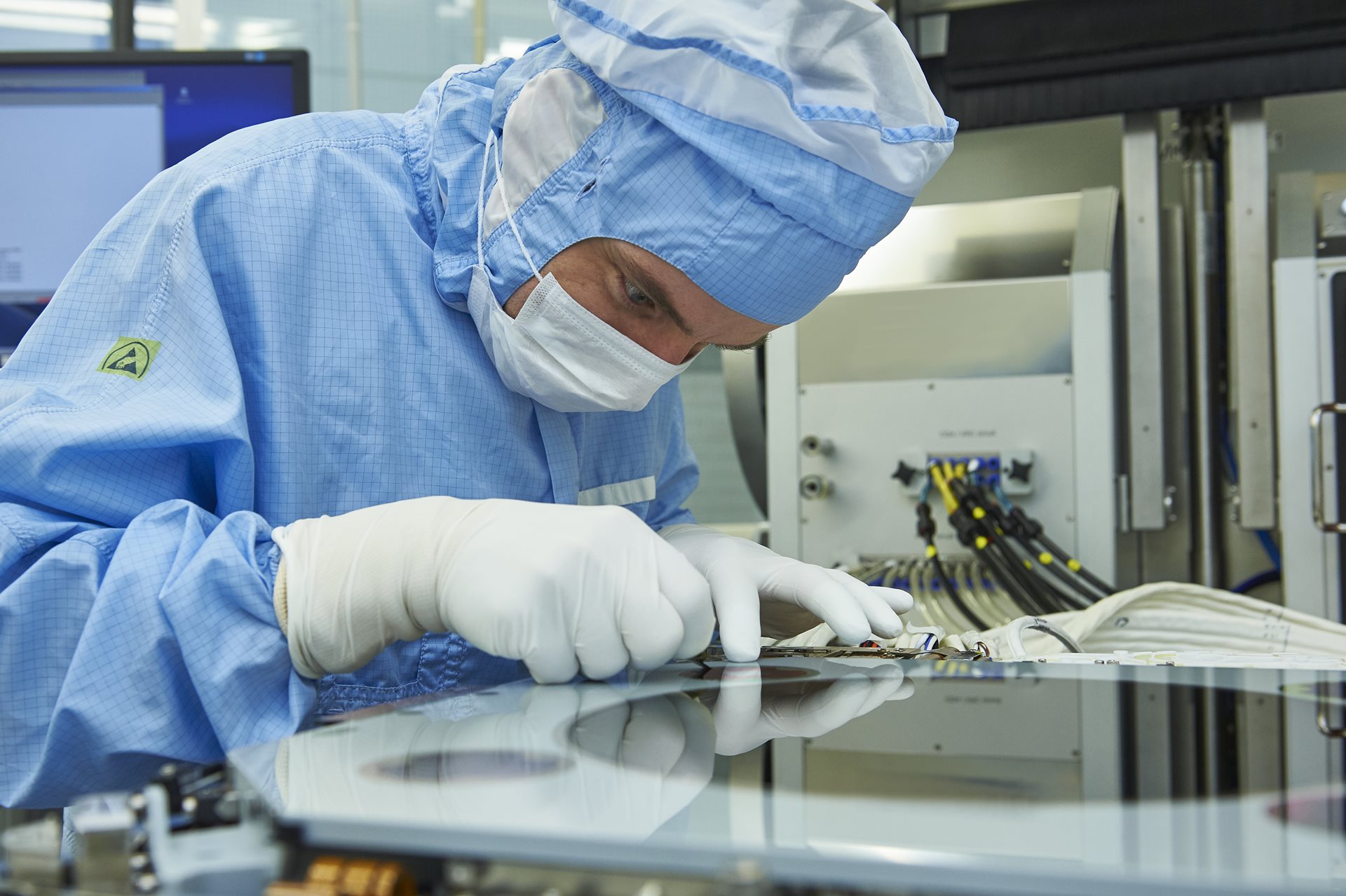Software plays an important role at ASML and can be found throughout our product portfolio. Without our software solutions, it would be impossible for chipmakers to manufacture increasingly advanced and energy-efficient chips.
Working in software at ASML
More than 3,000 software engineers create solutions that allow us to run, measure and optimize our lithography machines and to streamline chipmakers’ manufacturing processes.
Collaboration is key – at ASML, we encourage each other to speak up and contribute, relying on our diverse backgrounds and perspectives to arrive at the best solutions.

Java
At ASML, we use Java to develop tools that give chipmakers insight into their manufacturing process. Java is also used in diagnostic tools that help our customer support engineers keep our machines running in fabs around the world.
C++
Our C++ code base is a highly portable and multi-layered system that keeps pace with the chip-making industry and enables us to deep-dive into novel problems.
Python
We use Python for calibration and performance monitoring of every machine in our product portfolio, allowing our customers to create state-of-the-art computer chips using a range of diagnostic tools and an intuitive user interface.
C#
You probably haven’t used C# the way we use it at ASML. As one of our software developers, you’ll get the opportunity to develop machine control software and implement complex algorithms.
Other languages
Join our large software departments where people work with C languages, Java, .NET, MATLAB, big data, algorithms and UX design.
Software in our technology
Where can you make a difference at ASML?
Software can be found throughout our product portfolio – it’s in our EUV (extreme ultraviolet) and DUV (deep ultraviolet) lithography machines, our metrology & inspection systems, and is part of computational lithography. ASML also develops tailored software solutions designed to help our customers optimize the complex chip manufacturing process that takes place in their fabs. Taken together, the software in our ‘holistic’ lithography portfolio helps chipmakers to achieve the highest yield and best performance in mass production.
We also use machine learning to speed up the simulation and manufacturing process, and our data scientists generate valuable insights from the vast amounts of data that our machines produce.

Locations
Jobs in our main software centers
Career tracks in software
There are plenty of opportunities for developers and algorithm engineers to design and implement software at ASML.
ASML's software architects develop high-level concepts and designs while collaborating closely with colleagues.
Our test engineers safeguard the quality of our products, while integrators ensure that our products are well connected.
Colleagues have the opportunity to develop into various leadership roles, including technical leaders, project leaders and people managers.
Delivering for our customers
Meet Manisha Devi, who spearheaded the rollout of a new digital platform under pressure

Software heroines
Leading the way for women in ICT at ASML
Read about vice president of Software Development & Engineering Wei Li and other women as they pursue their dreams in computer science and software engineering at ASML.

Read our most frequently asked questions about software engineering jobs at ASML.
Which programming languages do you use at ASML?
We use C, C++, C#, Java, Python and MATLAB, but it depends on the type of work that is done.
How many software engineers work at ASML?
Around 3,000 software engineers work at ASML across the globe.
Why does ASML, a hardware company, need software engineers?
Software at ASML enables the technology that ASML strives to develop, ranging from mechatronics and robotics to real-time computing and signal processing. Our machines consist of highly complex mechatronic modules, which need to move at high speed and with high accuracy. This is orchestrated with software designed by our engineers.
In addition, hardware imperfections and physical effects are calibrated and corrected for with the help of software, helping us to maximize the performance of our machines. Of course, our customers and service engineers must be able to instruct the machine to carry out required tasks and view results, which requires multiple interfaces.
Read all about the role of software at ASML.
What kind of software engineering jobs are available at ASML?
We have a broad range of jobs for software engineers:
- Software (design) engineer
- Software architect
- Scrum roles, including scrum master, product owner, release train engineer or chief product owner
- Test engineer
- Test architect
- Integrator
- Project lead or group lead
Browse all software engineering jobs to learn more about specific roles.
What does a software engineer do at ASML?
Our software engineers work closely together in scrum teams to deliver software packages to our customers. An important part of their work is aligning with multidisciplinary stakeholders inside and outside their teams to gather requirements, agree on design, and align on test strategy and results.
The main challenge for software engineers at ASML is to fit the new feature into the existing software architecture such that it is robust, maintainable and extensible. The software package must also be released to the software archive.
Which kind of departments do software engineers work in, and what tooling and programming languages do they use?
In our Development & Engineering (D&E) department, we have three clusters:
Software development: This embedded software cluster focuses on the mechatronic modules and sensors and delivers the applications, drivers and calibrations for those modules. The programming languages used here are C, C++, Python, Java and MATLAB.
Scanner metrology: This cluster focuses on software that orchestrates the behavior of the mechatronic modules of the lithography machine. The metrology software measures physical imperfections and calculates how the hardware should behave to address these imperfections, maximizing system performance. Scanner metrology is a unique field for software engineers looking to combine their interest in physics and their programming experience. The programming languages used here are C++ and Python.
Applications software:t Applications software delivers functionality for on-product performance and process stability to our customers. This software has to integrate seamlessly into the customer’s production facilities. Applications software is also responsible for the software for our metrology tool, the YieldStar. The programming languages used here are C# and Java.
Read more about the role of software in our technologya.
How is C++ used at ASML?
C++ is the main programming language in our lithography tools, so software engineers with this experience are in high demand at ASML. C++ is used to design and implement driver software for the lithography tool. C++ jobs at ASML require work experience with C, C++, object-oriented programming and design patterns.
How is Python used at ASML?
Python engineers design and implement calibration, performance and diagnostics software for lithography machines. Python is also used for (functional) test automation (scripting). Python jobs at ASML require professional Python development experience as well as skills in C++ and object-oriented programming.
How is C# used at ASML?
C# is primarily used to develop the functionality of our YieldStar metrology system, which measures silicon wafers on the nanometer scale at various stages of chip production and as a result, produces terabytes of data. This data is then used to calculate any necessary adjustments during the production of a chip. These adjustments are immediately fed back into our lithography systems to optimize their performance and accuracy.
C# jobs at ASML require experience with object-oriented development, recent versions of the .NET framework, and knowledge of cloud development platforms (Microsoft Azure, Google Cloud or Amazon Web Services)
How is Java used at ASML?
Java is mainly used to develop Litho InSight, which is software with a user-friendly interface that our customers can use to optimize the chip manufacturing process. Our Litho InSight software takes the vast amount of metrology data produced by the YieldStar system and translates it into instructions that the chip manufacturing equipment can use to correct for production inaccuracies.
Java is also used for our diagnostic tools. These tools analyze logs and data of the chip manufacturing equipment. Diagnostic tools help our customer support engineers to get insights in the cause of distortions in the production process.
At ASML, our Java teams work from Hadoop retrieval to machine learning and full-stack development. Our Java jobs require engineers with experience in Java SE or Java EE development and an affinity for math, data science or machine learning.
What would make me an ideal candidate for a software engineering job at ASML?
The skillset differs per department and per role, but we look for software engineers with a formal education such as a bachelor’s degree, master’s degree, PhD, or Professional Doctorate in Engineering (PDEng) in software engineering, computer science or a related field of expertise. Software engineering candidates also need to have great communication skills and a good command in English, as well as the ability to be a team player and handle complexity and unpredictability.
Finally, our ideal candidates have a real drive and passion to be a part of a unique, innovative technology leader: ASML.
Do you offer remote software engineering jobs?
We believe that we share knowledge, innovate and collaborate best when meeting in person, but we recognize that some tasks can be done just as effectively outside the office.
Working from abroad is generally not permissible due to tax, social security and other implications for both the employee and ASML.
What is the onboarding process for a software engineer at ASML like?
Generally, each newly hired software engineer will have an ASML ‘buddy’ for six months to help introduce them to the company. They will also learn on the job and via the ASML Software Onboarding (SWO) curriculum, where software-specific topics are taught on both a theoretical and practical level.
There are two high-level learning objectives of the ASML SWO for new software engineers:
- They understand the way in which their efforts contribute to the end product. They learn about the importance of quality and align with the development process, tools and documentation. This focuses on the ‘why’ and ‘what’.
- They are equipped with the necessary knowledge. They know and can work with the development process, tools and documentation regarding software. This applies to ASML-specific software knowledge and skills on a basic competence level. This focuses on the ‘how’.
What are the career development opportunities for a software engineer?
Within ASML, we provide the opportunity to grow in various directions. For a software engineer, this generally means that you can grow further in the content/technical axis (such as a senior software engineer or software architect) or into a leadership position or project management-related role (such as SAFe/Agile roles). Your opportunities at ASML are not limited, as we enable you to grow your career in adjacent (competence) areas or businesses.








